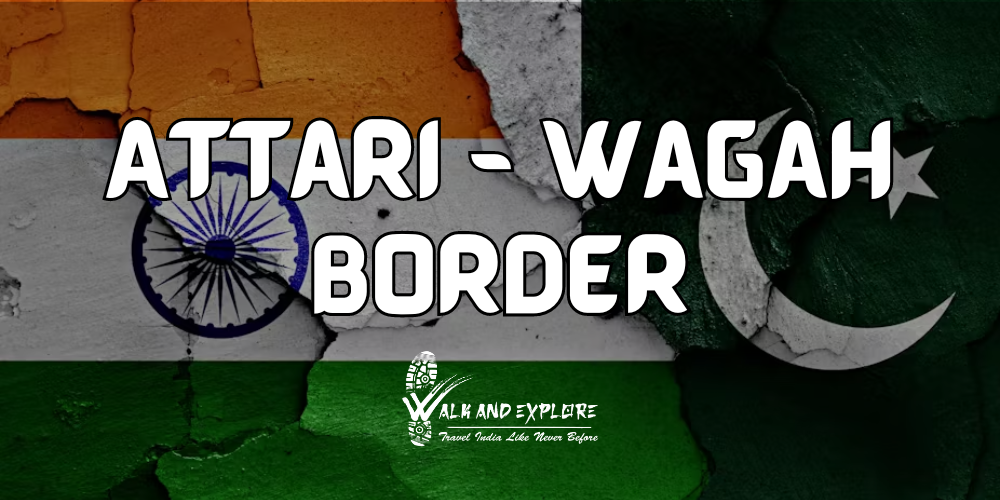Indo-Pak Partition in 1947

Before 1947, India and Pakistan were one big nation. Indo-Pak partition occurred in 1947, and it marked the division of British India into two separate countries: India and Pakistan. The partition was an outcome of years of political unrest, religious tensions, and the demand for separate homelands for Muslims and Hindus. Millions of people were forced to migrate to either India or Pakistan based on their religious affiliation. The Wagah border, situated between the cities of Amritsar in India and Lahore in Pakistan, was thus established. It served as a crossing point for populations on either side. This was a zone of extreme unrest and tension; however, in the 1960s, India and Pakistan agreed to open the border or the daily flag-lowering ceremonies. At present, it stands as a symbol of the spirit of competition and the uneasy past between the two countries.
Book our Full Day Amritsar Tour and experience the divinity of the Golden Temple then drive to Wagah Border to witness the ceremonial parade in the evening which will complete your journey in Amritsar.
What is Wagah Border?

The Wagah-Attari Border is a border crossing between India and Pakistan, located near the Pakistani city of Lahore and the Indian city of Amritsar. A trip to Amritsar cannot be deemed complete without a visit to the Wagah Attari Border. It’s the only road border crossing that is open to travelers. The major draw to Attari Border is the daily ceremonial closing ceremony, often referred to as the “Wagah border ceremony” or “Beating Retreat Ceremony.” What happens in this event is that soldiers from both countries engage in a synchronized display of military drills, including elaborate foot stomping, high kicks, and aggressive flag-lowering maneuvers. All this is accompanied by patriotic songs and chants from the crowds on either side. The ceremony attracts a large number of spectators from both India and Pakistan and serves as a testimony of the rivalry, as well as the shared cultural heritage, between the two nations.
History of Wagah Attari Border

The Wagah-Attari Border is not just a geographical divide between India and Pakistan; it’s also a symbol of the partition of British India, which led to the creation of two separate nations, India and Pakistan, with the latter being established as a homeland for Muslims. The border itself was demarcated during the partition, and since then, it has served as a significant checkpoint for travellers between the two countries. The “India-Pakistan border ceremony” is a significant tourist attraction on both sides.
The history of this ceremony dates back to 1959 when the Indian Border Security Force (BSF) and the Pakistani Rangers started the tradition as a display of military showmanship and patriotism.
Retreat Ceremony

The retreat ceremony at the Wagah Border, also known as the Wagah Border Ceremony or Beating Retreat Ceremony, is a daily military spectacle that takes place at the Wagah-Attari Border crossing between India and Pakistan.
This ceremony occurs in the evening before sunset. During this ceremony, you will see complicated drills and maneuvers performed by soldiers from both the Indian Border Security Force (BSF) and the Pakistani Rangers. The soldiers are wearing heavy uniforms and colourful headgear, thus making them easy to spot even from a distance.
You will see soldiers doing high kicks and some hard-hitting marching. This is followed by flag-lowering on both sides of the border. The entire ceremony typically lasts for around 45 minutes to an hour. Always check out Wagah border ceremony timings before you head for the same. There are separate winter and summer timings. You will have a memorable experience if you attend this ceremony.
Facts about ceremony
Mentioned below are some facts about the Wagah Border Ceremony:
- The Wagah Border Parade, also known as the Wagah Border Ceremony, occurs every evening at the Wagah-Attari Border crossing between India and Pakistan.
- It marks the closing of the border gates for the night and the lowering of the national flags of both nations.
- The Wagah Border Parade is one of the major tourist attractions in the region, drawing crowds from India and Pakistan, as well as international visitors.
- The tradition of the Wagah Border Parade dates back to 1959, when the Indian Border Security Force (BSF) and the Pakistani Rangers began the practice as a gesture of goodwill and camaraderie.
- During the parade, the entire atmosphere is filled with patriotic songs and chants. It’s an unforgettable experience that leaves a lasting impression on those who witness it.
How to reach the Wagah Border parade?

Reaching the Wagah Border Parade can vary depending on your starting point, but we will give you a general idea of how to get there:
Amritsar is the nearest major city to the Wagah Border. It is located approximately 28 kilometers away from the Amritsar main city or the Golden Temple. You can reach Amritsar by air, train, or road. Once in Amritsar, you can hire a taxi or take a local bus to reach the Wagah Border. You can book an Amritsar one-day tour if you want to see the Wagah Border Parade.
There are some precautions before reaching the Wagah Border that you need to bear in mind:
- Confirm the timings of the Wagah Border Parade in advance. The ceremony usually takes place in the evening, but the timing may vary during different seasons or special occasions.
- If you’re planning to cross the border from one country to another, make sure to carry valid identification documents such as a passport, visa, or national ID card.
- Dress comfortably and modestly, keeping in mind the cultural sensitivities of the region. Avoid wearing revealing clothing or clothing with provocative slogans, as this may cause issues.
- The Wagah Border area can get crowded and hot, especially during peak tourist seasons. Carry an adequate supply of water to stay hydrated.
- Arrive early to get a good spot to view the ceremony.
- Keep your belongings, including wallets, phones, and cameras, secure at all times. Beware of pickpockets in crowded areas.
- Follow the photography restrictions at the Wagah border. Be wary of certain areas or actions that are considered off-limits.
Why Wagah border is famous?
- Symbol of Partition: The border is a poignant reminder of the partition of British India in 1947, which led to the creation of India and Pakistan as separate nations. It represents the division of people, cultures, and histories.
- Retreat Ceremony: The daily retreat ceremony at Wagah Border is a hugely popular event that attracts tourists from far and wide. The unique display of military pageantry, along with a charged atmosphere of patriotism and camaraderie, is something that you can only witness here.
- Cultural Exchange: Despite the political tensions, the Wagah Border is a platform for cultural exchange between India and Pakistan. The ceremony’s participants often engage in friendly interactions, including handshakes and greetings, fostering a sense of unity and goodwill among the people.
- Historical Significance: Wagah Border holds historical significance as the site where millions of refugees crossed during the partition, fleeing violence and seeking refuge in their newly formed countries. The border serves as a living memory of this turbulent period in South Asian history.
These are some of the reasons why the Wagah border is so famous. Wagah Border’s fame stems from its role as a symbolic and tangible representation of the complex relationship between India and Pakistan.
So, if you want to be a witness to the past of your country and evoke feelings of patriotism, visit the only open border crossing between India and Pakistan, the very famous Wagah –Attari border, without a second thought. It is one of the top 10 places in Amritsar. The slogans of “Jai Hind” will transport you to a zone of nationalistic enthusiasm. Dance to the tunes of “Mere Desh ki Dharti “, blaring through the speakers.
Book the Amritsar Full Day Guided Tour and bask in the beauty of the rich past and era of the Indo-Pak partition.


